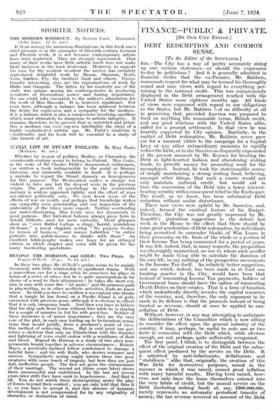SHORTER NOTICES.
If from among the numerous illustrations in this book one's chief pleasure is in the examples of fifteenth-century German and Flemish work, it is not because contemporary artists have been neglected. They are strongly represented. That many of their works have little artistic merit does not make their inclusion in the least irrelevant. However, to support his case for the modern woodcut the author has certainly reproduced delightful work by Messrs. Shannon, Bodo, Vera, Gallien, Fry, the brothers Nash and others. Excep- tionally interesting, also, are the reproductions of work by Blake and Gauguin. The latter, by his masterly use of the craft, was unique among his contemporaries in producing woodcuts of tremendous power and lasting importance. No one could take exception to the author's admiration for the work of Miss Raverat. It is, however, significant. For even here, although a balance has been achieved between the desire for expression and a sympathy for the medium, it is a balance which is also a compromise involving sacrifices which must ultimately be dangerous to artistic integrity. It remains, therefore, to be proved that so restricted and primi- tive a medium can ever exp ress intelligibly the ideas of a highly sophisticated artistic age. Mr. Furst's erudition is considerable, and his book will be essential to a study of this branch of art.










































 Previous page
Previous page